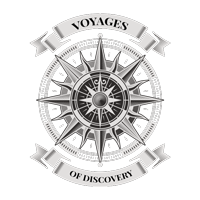Notes
The experience of having to flee one’s country is told in reports, stories, songs or drawings.
Aziza Brahim is a Sahrawi singer and actress. She was born in one of the four huge refugee camps in the Algerian desert, where over 150,000 Sahrawis are living, without jobs and dependent on humanitarian aid. The Western Sahara, her country, was occupied by Spain, who was given possession of the territory as a result of the 1884 Berlin Conference. Since 1956 the Kingdom of Morocco has claimed the area without legal justification. The Frente Polisario — recognised 1979 as the rightful representatives of the Sahrawi people by the UNO General Assembly — has been unsuccessfully fighting the occupation of their country, which is also the location of the largest phosphate deposits in the world.
Women fleeing Afghanistan give testimony about their and their children’s dreadful treatment along the Balkan route. InGreece, in contrast, 82 year-old Panagiota Vasileiadou is cherished as the Syrian refugees’ grandmother. My own film Passages from 1996 uses found footage Super and Normal 8 amateur-film material to tell different stories of what, at first, seems to be travel accounts.
M.I.A. is a British rapper, songwriter, visual artist, and activist. Her experience as a child during the Sri Lankan Civil War and her subsequent displacement made her an important and outspoken icon on refugee issues. Zanny Begg and Oliver Ressler, artists and filmmakers, she from Australia, he from Austria, have a shared interest in hidden and contested history/ies.
Anubumin, made in 2017, talks about the Republic of Nauru, a phosphate-rock island in the Central Pacific. Due to rich deposits being near the surface strip mining operations were easy by 1974 this tiny island, with its then 4,000 inhabitants, became the smallest republic and second richest country in the world. In 2001, after the deposits were depleted, Australia’s offer of economic help was the erection of two detention centres for everyone intercepted on the high seas seeking asylum in Australia. Khadija von Zinnenburg Carroll is an artist, filmmaker, performer and a Professor for Global Art History at the University of Birmingham. She talks with Mary Bosworth, Professor of Criminology at the Oxford University about the film that shows drawings made by inmates of UK immigration removal centres while awaiting deportation or release. Between 400,000 and 500,000 US migrants, mostly from Honduras, El Salvador and Guatemala, use the network of freight trains crossing Mexico to reach the United States. The trains are called many things: The Train of the Unknowns, The Death Train or The Beast…
Aziza Brahim performs refugee blues Lagi, 4:20
Source: YouTube
New Migrants Face Old Terrors on Balkan Route, 4:39
Source: Vimeo
Greece: The Refugees’ Grandmother in Idomeni, 3:06
Source: YouTube
Lisl Ponger
Passages, 12:00
Source: YouTube
M.I.A. – Borders, 4:42
Source: YouTube
Zanny Begg & Oliver Ressler
Anubumin, 18 min., 2017
Source: Vimeo
Khadija von Zinnenburg Carroll, Prof. Mary Bosworth
Introduction to Artists in Residence: Immigration Detention Archive,2:20
Source: Vimeo
Khadija von Zinnenburg Carroll
Immigration Detention Archive, 11:32
Source: Vimeo
Feeding The Beast: women rush food to migrants crossing Mexico, 4:24
Source: Vimeo
* being open source or obtained from a permitted uploader to either YouTube or Vimeo











